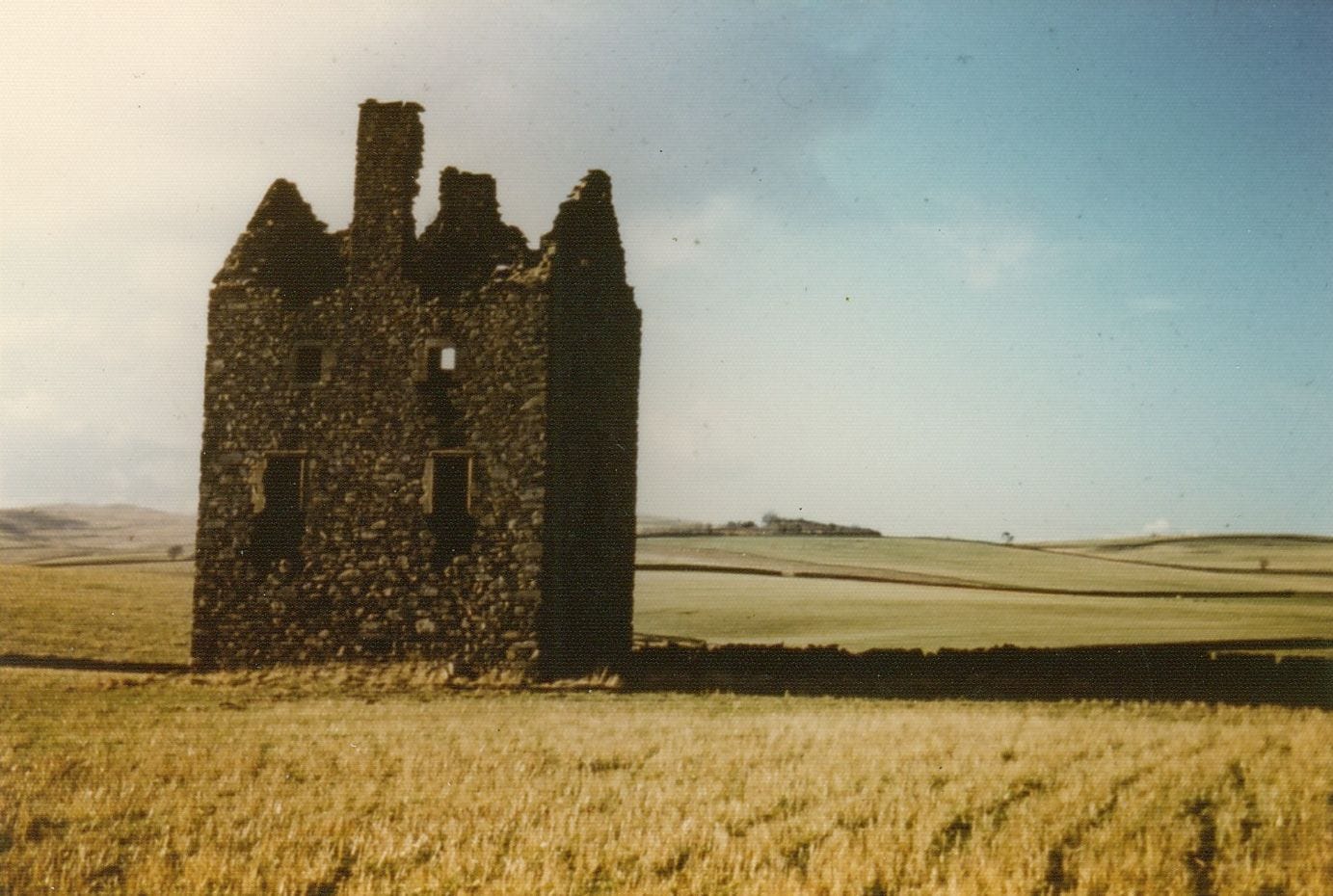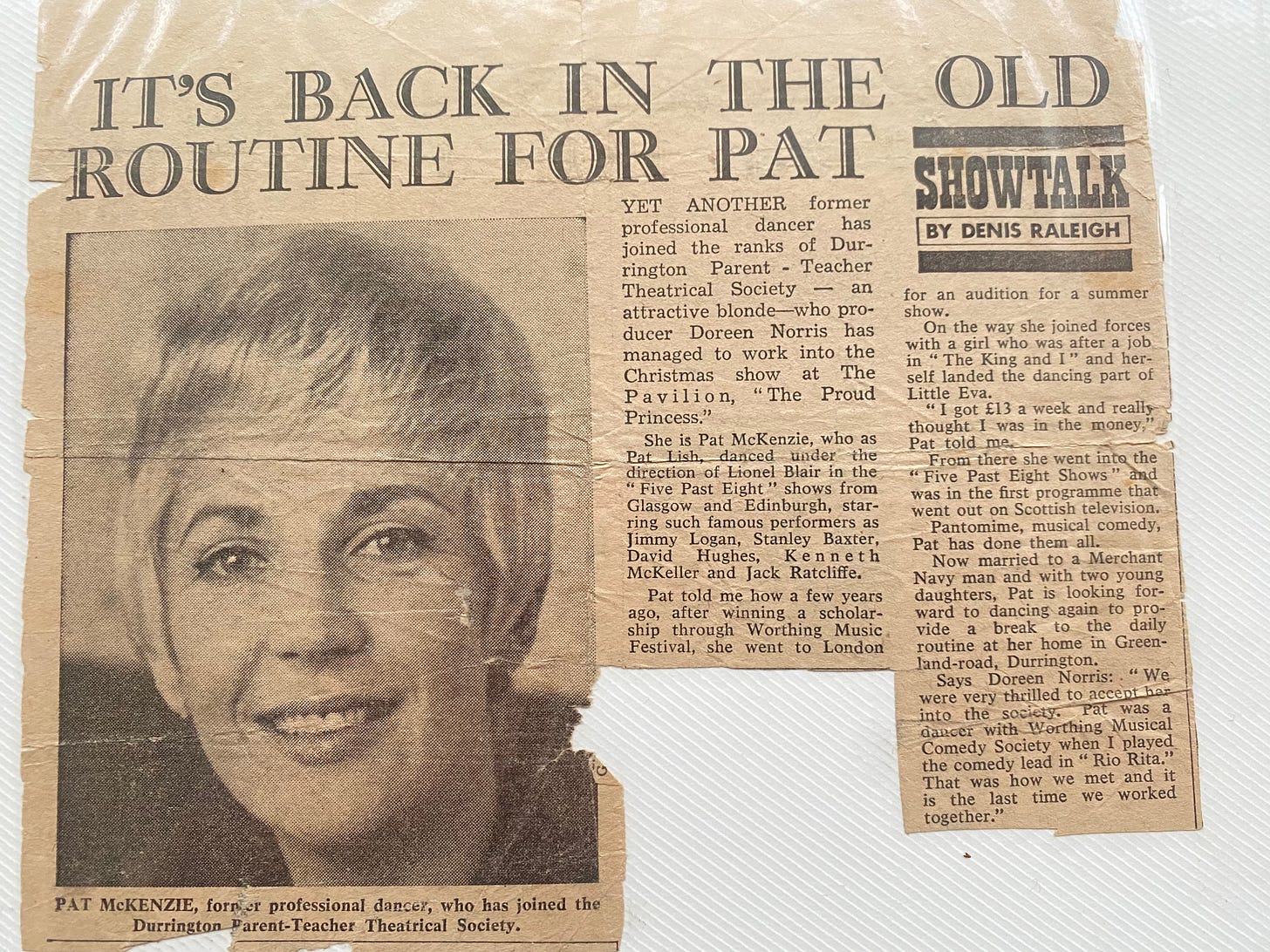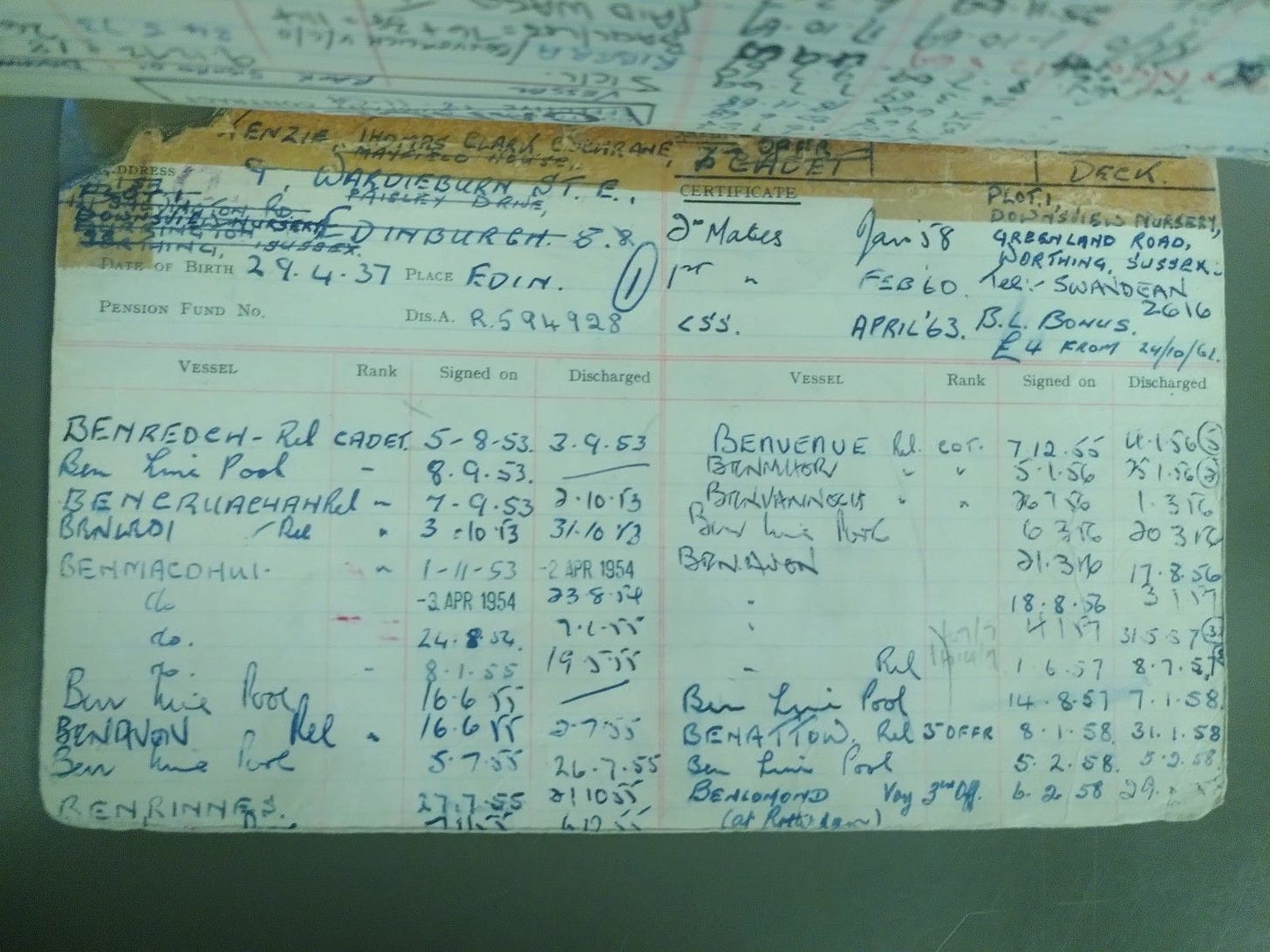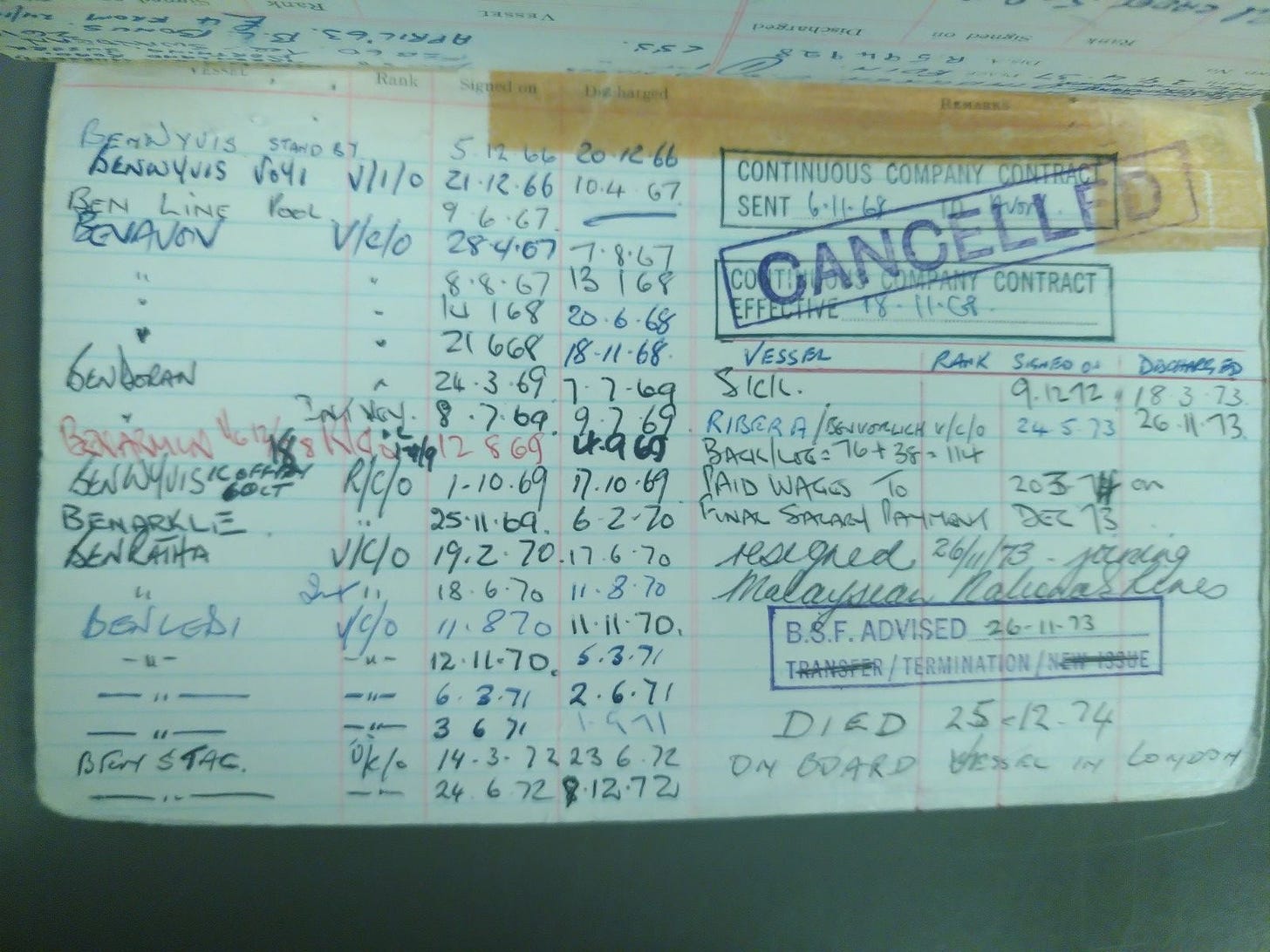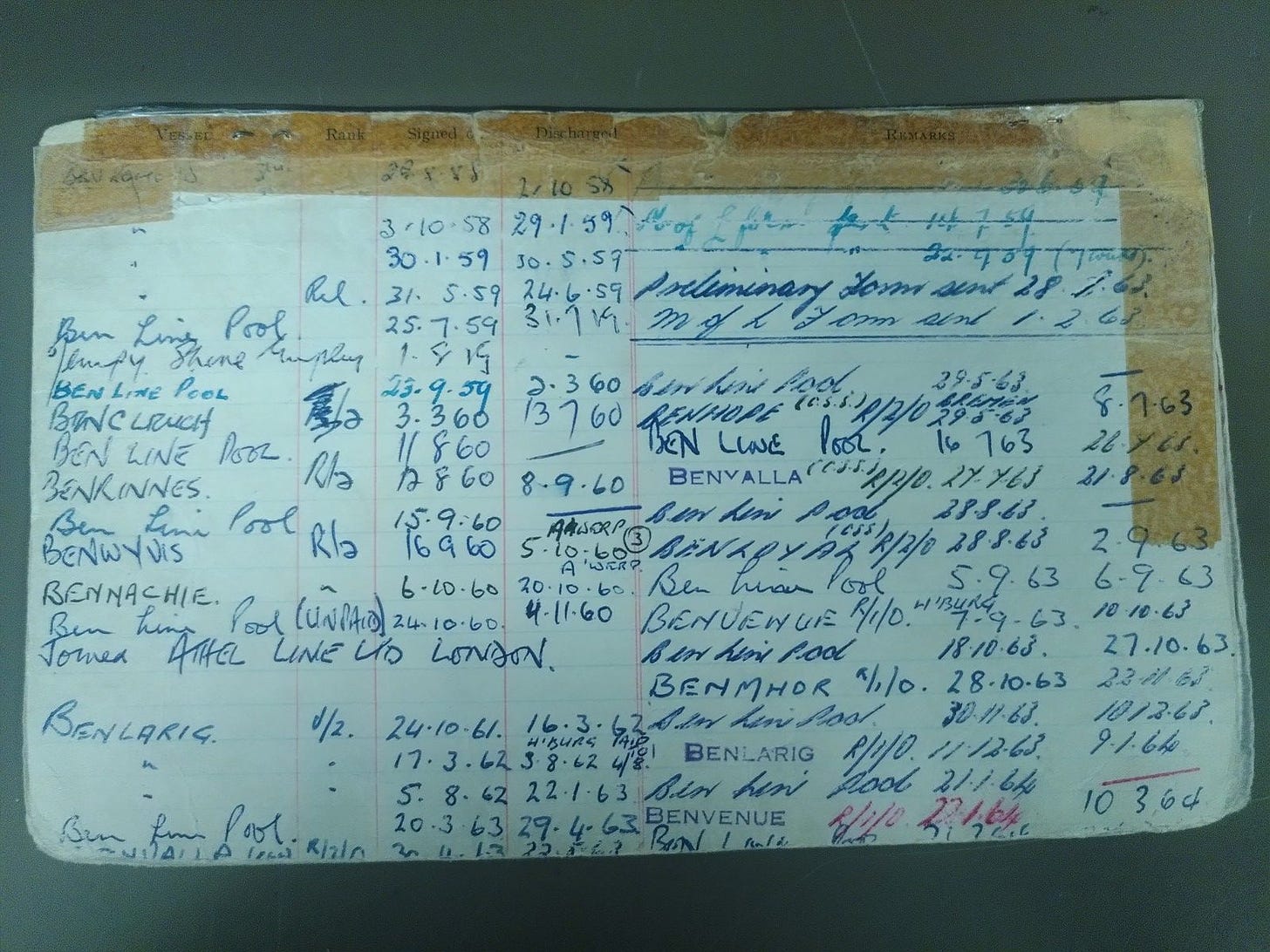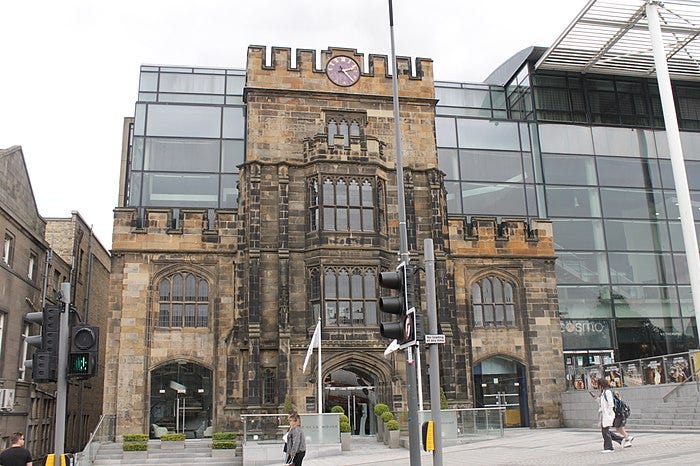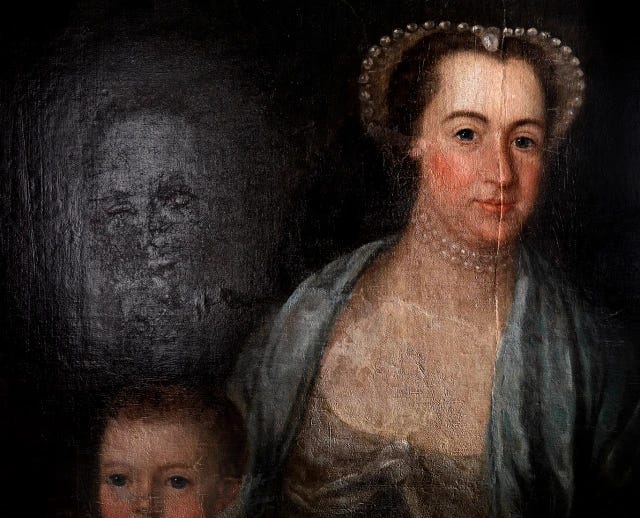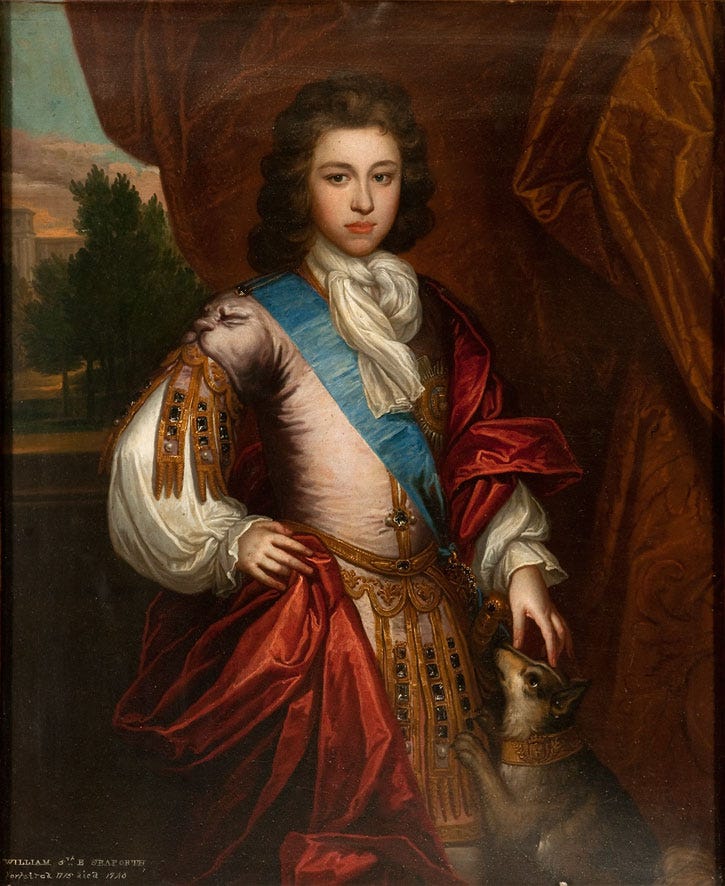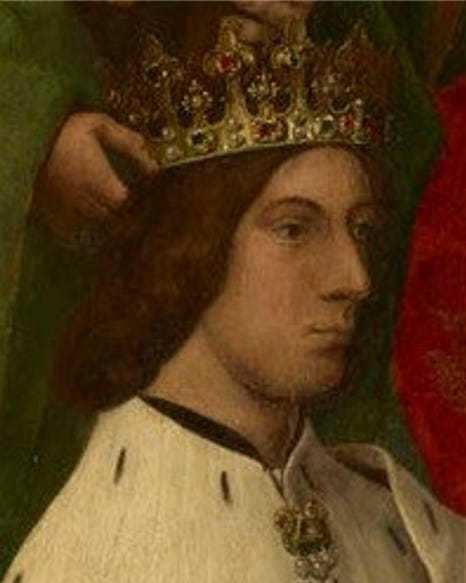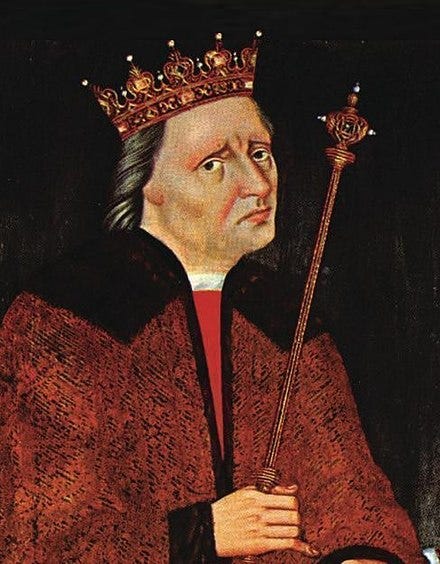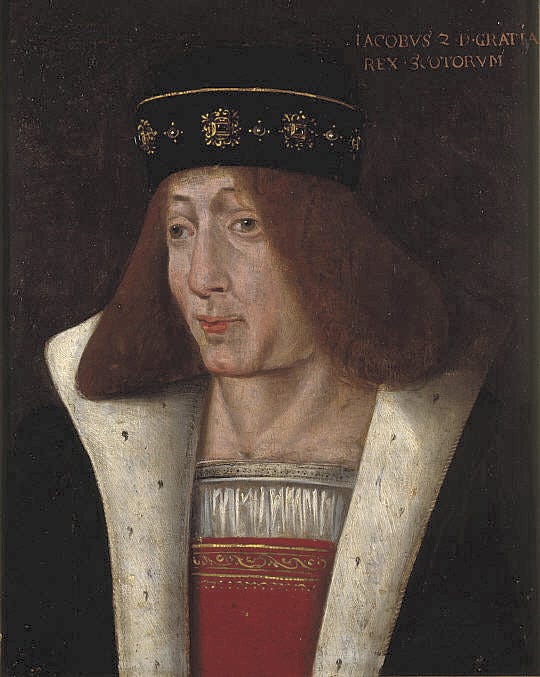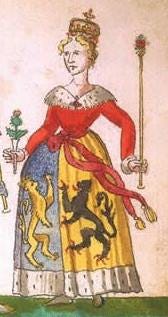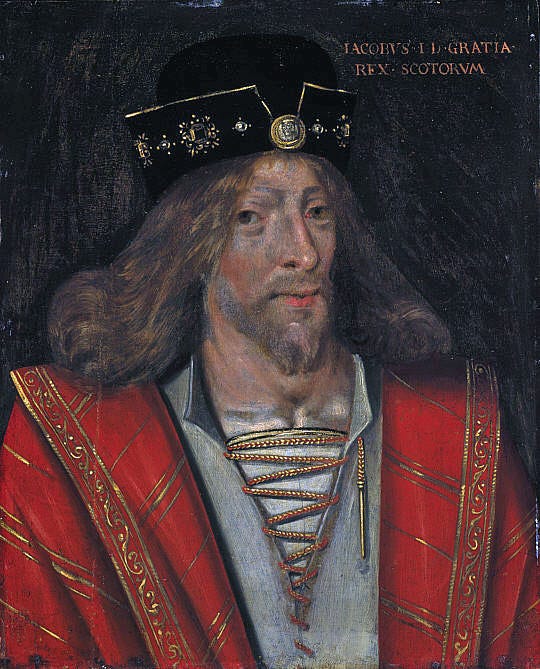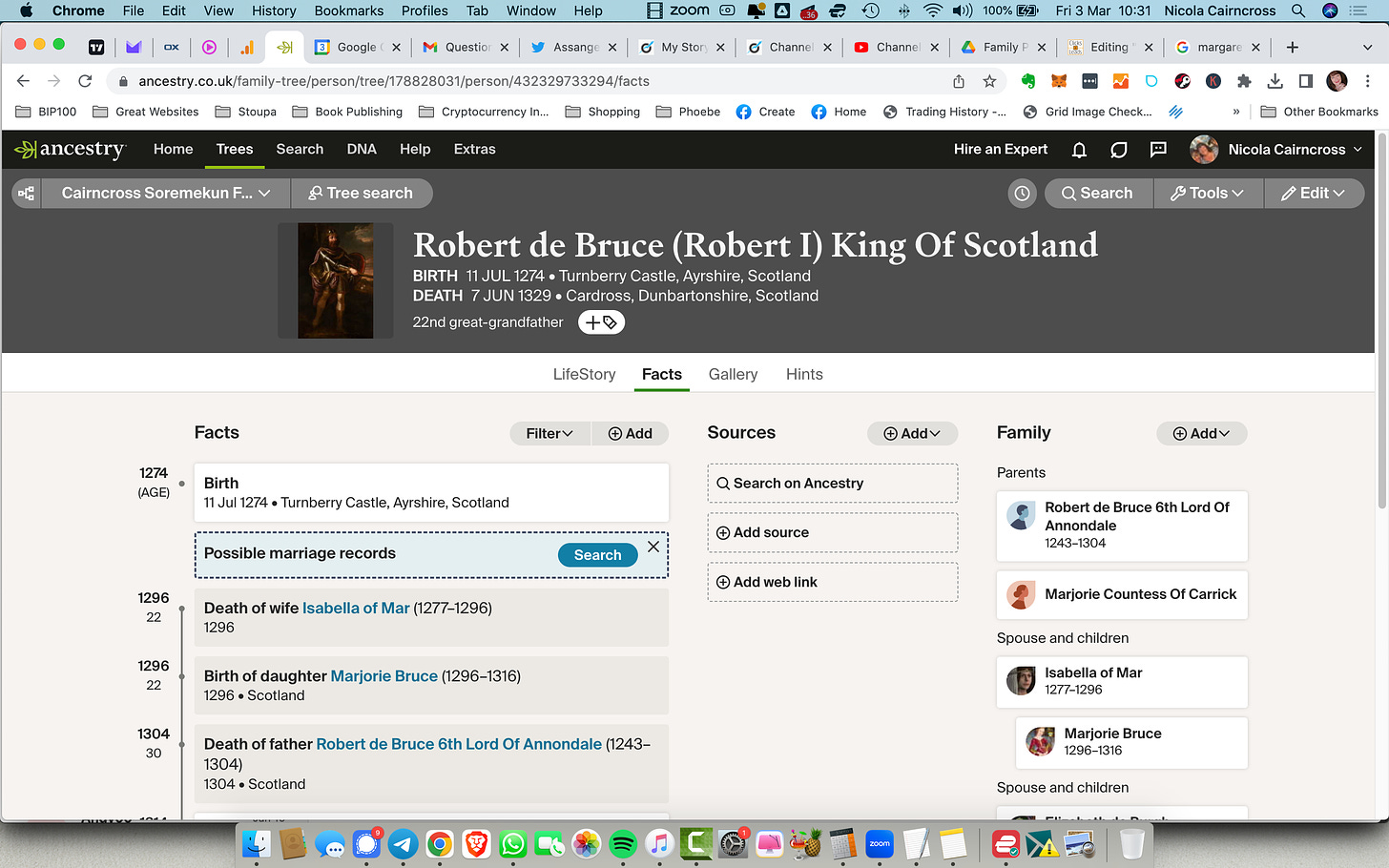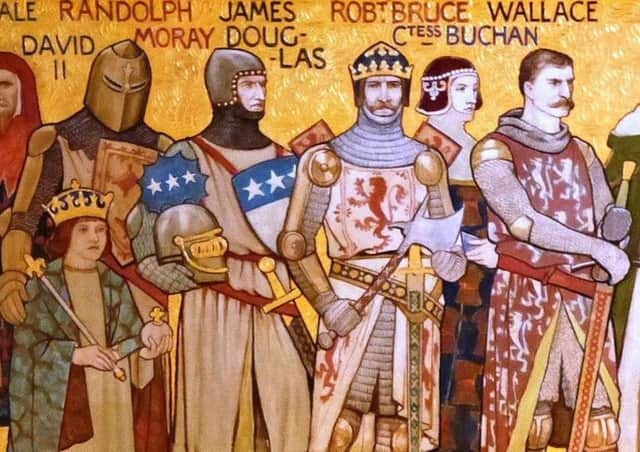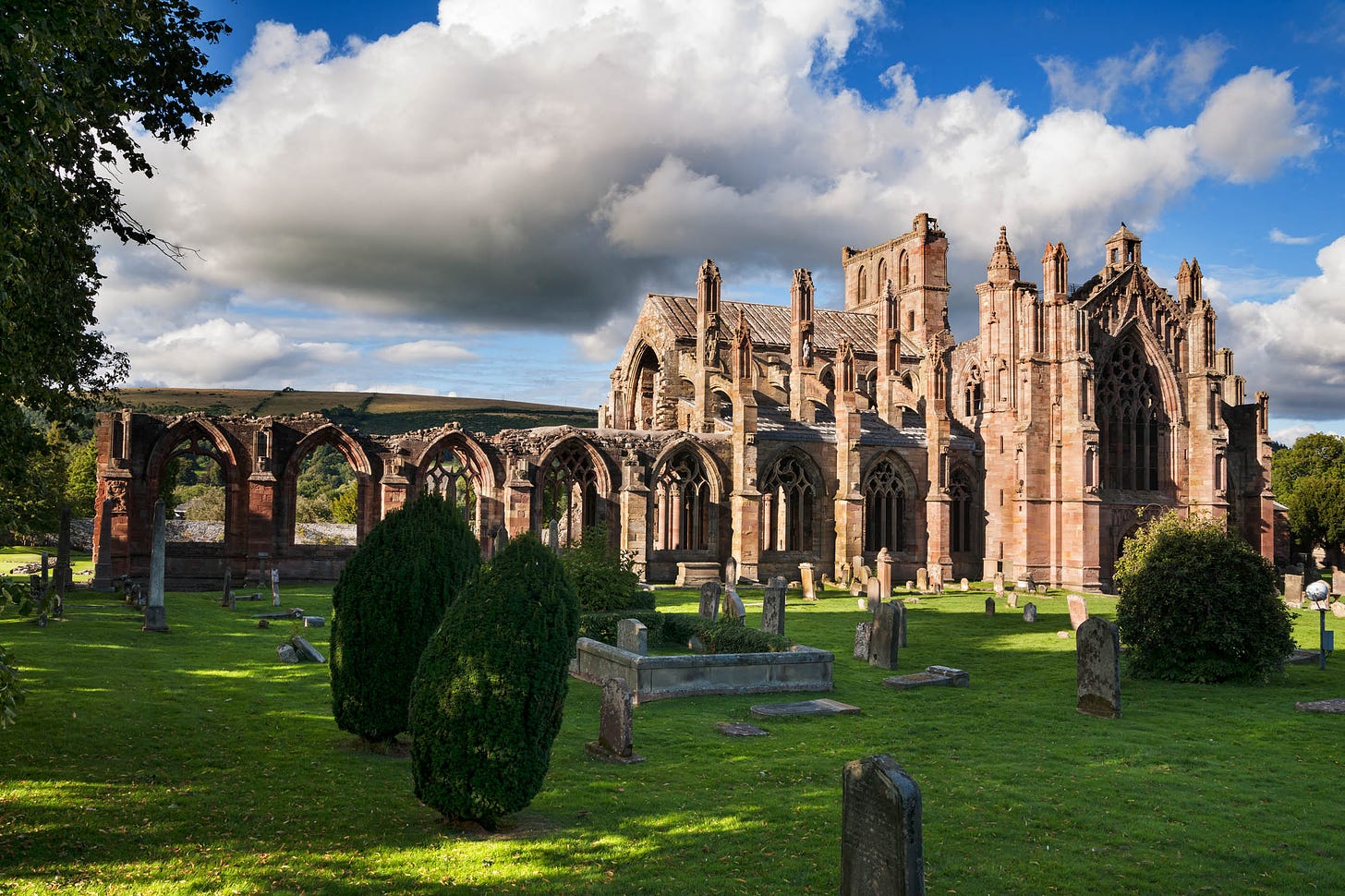Having tackled my Mother’s side of the family, via my Grandparents Ronald & Amelia Lish’s ancestors, it was time to turn to my father’s side.
The person I think of as my Dad, Alexander “Sandy” Cairncross, has a well-documented family tree – they even have their own website. The earliest Cairncross’s go back to 1200 and were at the court of David I, King of Scots (1124-1153). There was a Castle, Glendearg, but it’s in ruins now.
My particular branch of that family didn’t stray far from Montrose, in Scotland, and were fishermen, although you will see my Dad became an engineer in the Merchant Navy, travelled the world and in his early 80’s, he now lives in New Zealand (for the second time) with his 4th wife, Eileen.
While Dad was undoubtedly very Scottish and I’d always been very drawn to Scotland, I’d never FELT particularly Scottish, as if I was cheating a bit by drawing on my step-father’s birthright.
Dad (Sandy Cairncross) had met my Mum in rather unusual circumstances, while he was a Chief Engineer on a ship in what is known as the Merchant Navy.
But I’m getting ahead of myself here…Mum had been an up-and-coming dancer and singer in local then national Repertory Theatre and had even made it to the West End.
She was in the Yul Brynner version of ‘The King & I’ in which I’m pretty sure she played ‘Little Eva’. She’s also danced in the ‘Dolly Birds’, a forerunner of Pan’s People, who I think, according to the article above, danced on Lionel Blair’s “Five Past Eight” shows (this was when UK TV first started) and apparently she was in the first show on Scottish TV. Lionel Blair wasn’t very happy when I told him that, when I met him much later in life! I think it made him feel old.
She had some pretty racy tales to tell, one involving my godmother (also a dancer), a lake in the middle of nowhere and Adam Faith!
I always thought her mother, my Nan, had forced her off the stage to marry when she got pregnant with me via my birth father Thomas, but looking at her marriage certificate, that was not the case. They married on 4th July, 1959 and I wasn’t born till late September, 1961. But in those days, once you married, you were expected to give up your job.
That’s just the first surprise of this episode of the blog!
She married Thomas Clark Cochrane McKenzie and moved back to Sussex, to Durrington in Worthing. After marriage, Thomas went back to sea with the Benline Merchant Navy and Patricia worked in Durrington Telephone Exchange (which she hated) and lived on Greenland Road, just down the road from her Mum and Dad. We were to return to Greenland Road later in life, because, unless venturing north to Scotland, or west to Wales (both after meeting her second husband Sandy), Mum didn’t stray far from Durrington. I suppose, with her first husband Thomas away at sea, she wanted to be near family and then later, with two more children by Sandy, she needed help even more!
The Imperial War Museum’s website gives a short history of the Benline Merchant Navy which starts with “In wartime, Britain depended on civilian cargo ships to import food and raw materials, as well as to transport soldiers overseas, and keep them supplied. The title ‘Merchant Navy’ was granted by King George V after the First World War to recognise the contribution made by merchant sailors.
Britain’s merchant fleet was the largest in the world during both world wars. In 1939, a third of the world’s merchant ships were British, and there were some 200,000 sailors. Many merchant seamen came from parts of the British Empire, such as India, Hong Kong and west African countries. Women also sometimes served at sea in the Merchant Navy. “
Googling it, the uniforms were as smart as in the Royal Navy and standards and training were assuredly as high. Profits come first and all that!
As I sat and thought about it all, I realised that I WAS half-Scottish, due to my birth father Thomas being just as Scottish as Sandy was. You’ll laugh as we go through this story, how could I not have known? But in my defence, Thomas was rarely there and died when I was very young, well under 10, so over the years I’d largely forgotten about him.
Thomas Clark Cochrane McKenzie
My birth father, Thomas Clark Cochrane McKenzie, was the Navigation Officer, also known as the First Officer or Chief Officer of various ships in the Ben Line Merchant Navy. When I was about 5-6, my mother competely disappeared and we went to live with my Grandparents. My sister Heather and I were never told what had happened, but it turns out Mum had been ill, after a bout of post-natal depression and the subsequent bouts of ‘electric shock’ treatment she’d been given. She must have had some kind of psychotic break, been hospitalised into Graylingwell, near Chichester and then released to ‘convalesce’.
When Patricia met Sandy, she was on board ship, as spouses of officers were occasionally allowed to accompany them on trips to recover from illnesses. There is much more to this story that I have time to go into here but I’ll write it up one day. That electric shock treatment and other contributing factors cast a long shadow of poor mental health for Pat down the years.
I’ve been trying to puzzle out which ship they would have been on, when she met Sandy. I was born in ‘61 and was around 4-6 when it all happened, so it must have been ‘65 - 67.
To us children, my mother was a very glamorous, if sad person. Thomas was a distant figure, a serial philanderer (we later found out) and presumably busy with his duties on board and away for months on end. She told us that when she was on that long convalescent trip, she hated spending time in the Officer’s Mess, finding them very stuck up, and over time got to know a load of the ‘below decks’ ratings and spending time down there. She ended up falling in love with Alexander ‘Sandy’ Cairncross, the Chief Engineer.
Two officers on the same ship, on a round-the-world tour of duty. As my daughter, Phoebe would say, ‘That’s awkward.’
I only remember seeing my father Thomas once, when he came home from the ship. There must have been other occasions but this occasion stands out because he got very cross. Heather and I were squabbling over a chess board and Thomas threw it across the room in irritation. A scary event for two small children.
We only visited my birth father’s home in Edinburgh once that I recall, at the age of around 5-6 years so it would have been the mid-Sixties. The address on his record, 9 Wardieburn Street, Edinburgh rings bells. I remember it was a very small flat in a huge tenement block with lots of outside stairs. However, when I look at Wardieburn Street now on Google Earth, it doens’t look as bad as I remember! On that occasion, I met my Grandmother, whose name I didn’t recall and “Auntie” May, who my sister Heather and I both recall vividly, due to the wealth of various types of hairy moles on her seriously whiskery face. Grim.
Now I’m getting older, some of my moles are showing the same tendency and in memory of “Auntie” May, I’ve determined – no matter how shortsighted I get – not to let them get out of hand. I have a tiny great nephew now, Finn, and I don’t want to see him recoil when they say ‘Give your Great Aunt Nicola a kiss!’ if I can avoid it!
It took weeks to track any information down about Thomas Cochrane McKenzie, he really was a man of mystery. I didn’t know about his other middle name Clark at this point.
He didn’t appear on any Census, there’s no birth record and if it wasn’t for their Marriage Certificate, which I held in my hands, I wouldn’t have known his father’s name or occupation. Mum did have one photo of him but that was long gone. I remember he looked a bit like my late partner Steve, which is weird (but not when the psychologists say you are attracted to people who remind you, physically or emotionally, of one of your main carers). Not that I would describe Thomas as any kind of carer, certainly not to our mother.
The ‘Clark’ middle name was new to me – the photo I’d seen was inscribed ‘Thomas Cochrane McKenzie’, but if I thought this extra name would make my birth father or his father easier to track down, I was to be proved wrong. I have to say at this point the Ben Line were very helpful. I wrote to them and as I was able to give them lots of detail, they eventually sent me his service record, which was on four index cards. This provided some of his previous addresses along with more details about how and where he died. His ships were listed too.
Although Thomas’ father William Matthew McKenzie was a Miller according to the Marriage Certificate, he didn’t appear on any Census records either. In fact, I only stumbled across him eventually when one of his brothers, (Thomas’ uncle) Henry Wells Matthew McKenzie showed up during a census search on Ancestry Suddenly, after weeks of looking, there was William Matthew McKenzie large as life. The Census Record accidentally recording his father’s brother, and Ancestry then listing all the children in the family, presumably getting them from Birth records. There was even a Thomas M. McKenzie (who would have been an uncle to Thomas Clark Cochrane, and another uncle William B, who only lived 5 years. Their names were reused for new babies, presumably as a way of memorialising those who had died.
Henry was a military man, serving for four years leading up to and presumably also in the First World War. He died a widower, in his early 80’s and he was listed as a Labourer. Here he is, on the far right, with friends.
The McKenzie Clan - From Oban & Moray To Edinburgh
William Matthew McKenzie was born in 1907, in Larkhall, Lanarkshire, Scotland. His father, William McKenzie Snr was a labourer, and he was born 1863 in Moray, Scotland.
William Snr was later listed as a ‘book canvasser / peddler’ in Edinburgh, so he was a door-to-door salesman later in life. After the death of his mother Agnes in 1923, when William Matthew was 16, the family moved to 3A Cannon Street, in Edinburgh in 1925, then William M. joined the Merchant Marine in 1925 at the age of 18. That explains his lack of Census entries, just like his son, Thomas Clark Cochrane McKenzie.
Then, on 4th March 1927, after just two years at sea, William Matthew married Mary Burnie Waugh, a chocolate packer, in Lady Glenorchy’s Parish Church, St Giles, Edinburgh. William is listed as 20 years old on that marriage record, which confirms this is the right William, even though there is no mention of a middle name of Matthew. This is not unusual, however.
Mary Burnie Waugh had been born in 1909 and there’s a World War I Enlistment Record for her father, William Waugh, aged 36, where Mary is listed with the correct date of birth.
But I’ve been unable to pinpoint her exact date of death, as Mary McKenzies (as she would have been then) were fairly common in Scotland!
There’s a Mary B. W. McKenzie listed in the 1966 Census as living at 217A Dalkeith Road, Edinburgh. The initials make me think this is her as does the fact that I would have been able to visit this one. Google street view chimes a bit with my memories of the buildings too.
Further investigation revealed that the men on the ships of both the Royal and the Merchant Navy were not counted in the census unless they were on shore on the day of the census. That would explain the lack of Census records for both William M. and Thomas as adults. But not the absence of Mary Burnie Waugh McKenzie and the young Thomas. He was born in 1937 so should have been included in the 1941 and 1951 Census at least, as they are done every ten years.
This is the kind of rabbit hole you can end up in, on Ancestry.
Initially, I didn’t want to assume Mary Burnie Waugh is Thomas’ mother, as the William McKenzie she married did not list a middle name and he was listed as a Railway Labourer at 20, but perhaps he joined the Merchant Navy afterwards.
There is also a family tree on Ancestry that lists the couple as having one child, William, with no mention of a Thomas. A daughter, Margaret, turned up later too. Mary Burnie Ward McKenzie is quite an unusual name, however, so it’s unlikely it’s another couple. So I’m contacting the owner of that other tree to see if she’s heard of a Thomas Clark Cochrane McKenzie.
Here’s a picture of Lady Glenorchy’s Parish Church, where they married, by Stephen Dickson.
If Mary Burnie is Thomas’ mother, he wasn’t born until April 1937, which is 10 years after their marriage in 1927. This seems a long time to wait for a baby, until you remember William was in the Navy and away for long periods of time. Perhaps Mary’s fertile periods didn’t coincide with William’s shore leave!
Why are there no birth records for Thomas Clark Cochrane McKenzie? Was he illegitimate? Why wasn’t he registered at birth and how could he join the Merchant Marine without a Birth Certificate? Who were William and Margaret who, in some records are listed as siblings and offspring of William M. and Mary B.W. McKenzie, but whom I have never heard of?
So many questions.
Eventually, I had to leave Mary Burnie McKenzie and resolve to come back later. The name Burnie was niggling away at me though, could I have heard it as a child? Grannie Burnie?
In the end, cruel as it sounds, Thomas’ mother is a bit irrelevant, as once past this slight mystery, the McKenzie line rolled back in time, unfolding in full across one magical Sunday afternoon in Brighton, just before Christmas 2021.
Back To The North Of Scotland
Just to recap, Thomas’ dad was William Matthew McKenzie, so his grandfather was William McKenzie, born 1863 and married to Agnes Marshall.
Grandfather William’s dad was William Brandon McKenzie (b. 1837) who married Helen Hislop. William Brandon was an agricultural labourer living mainly in Forres, Moray.
His father William McKenzie (b. 1810) lived in Urquart, Elgin and was listed on the Census as a Mason, so at least he had a skill. William The Mason married Christine Ramsey and they went on to have 12 children!
The next generation back stuck with tradition and William’s father was also a William (b. 1783) who married Margaret Rhind (b. 1788). Christmas for this pair must have been expensive with 12 grand-children! William & Margaret lived at Phimisters Houses, Moray, Scotland and he was also in the Army at some point! If he was born in 1783, his army days must have been around 1800 - 1830 so which war would it have been?
Wikipedia gives some idea. This Timeline of the British Army 1800–1899 lists the conflicts and wars the British Army were involved in.
French Revolutionary Wars ended 1802
Second Anglo-Maratha War 1802–1805
Napoleonic Wars 1802–1813
War of 1812 1812-1815
Hundred Days 1815 The return of Napoleon
Anglo-Nepalese War 1813–1816
Third Anglo-Maratha War 1817–1818
First Ashanti War 1823–1831
First Anglo-Burmese War 1824–1826
William McKenzie could have been sent off to fight in any of these, but survived, as he was listed in the 1851 Census as being a farmer of 76 acres and having three servants!
This is where we depart from the McKenzies temporarily but not the Williams’, because Margaret’s father was a William Rhind (b. 1751) also listed as a Farmer, and her mother was Rebekah Falconer. It is unknown if Mr Rhind owned his farm or was a tenant farmer but it’s all a big step up from the generations to come who were mostly tenants, working as labourers or salesmen!
The more I delve into all this, the more I realise that the key to prosperity is having some land, whether you own it or rent it. As people moved towards the cities, most tended to get poorer, in so many different ways.
Again, my spidey senses started twitching, as when you come across a surname like Falconer, you are getting close to someone who may have been a Falconer to a nobleman or even to Royalty, as people tended to be named after their professions. Rebekah Falconer was my 5th Great Grandmother, just to orientate ourselves on how far back we are.
The Falconers of Moray area, although fairly ubiquitous, didn’t get any real fame until Hugh Falconer (1808–1865). He was a contemporary of Darwin’s and became a Scottish geologist, botanist, palaeontologist, and paleoanthropologist. He studied the flora, fauna, and geology of India, Assam, Burma, and most of the Mediterranean islands and was the first to suggest the modern evolutionary theory of punctuated equilibrium. He studied the Siwalik fossil beds, and may also have been the first person to discover a fossil ape. He and his businessman elder brother created the Falconer Museum, which has sadly closed due to lack of funding. It’s still there but closed for now.
Rebekah’s father, John Falconer (b. 1727) although of interesting ancestry if you go far enough back, married Marjory Kaenock, who had another intriguing name (spelt many different ways) and she’s the more interesting leg of the family here. The Census hadn’t started in Scotland by then, so I’m assuming that everyone from here on in were landowners or minor gentry as they tended to have better records in the Parish Churches. Call me cynical, but anyone who owned land is very well tracked.
Marjory’s father Thomas Kynock (b. 1702) married Margaret Sinclair, whose parents were Mary Duffus Sutherland (b. 1682) and the very grandly titled Sir James Thomas 7th of Mey & 4th Baronet Sinclair. Now they wouldn’t have let Margaret marry any old hobbledehoy, so Thomas Kynock must have had decent prospects.
I was getting excited now. I had to get up and make tea.
There was a castle!
Here it is, the Castle of Mey, Caithness (Barrogill Castle). This would be the Mey / Sinclair family seat.
And what a very fine Scottish-looking castle it is, so much so, in fact, that it caught the eye of Queen Elizabeth, the Queen Mother in the 20th Century.
In 1952, HM Queen Elizabeth The Queen Mother saw what was then known as Barrogill Castle while staying with Commander and Lady Doris Vyner at the House of the Northern Gate on Dunnet Head, a short distance to the west. Despite its poor condition, Her Majesty purchased the castle that year and set about renovating and restoring both the castle and its gardens and parklands, which extended to about 30 acres. She also restored the castle’s original name changing Barrogill Castle back to The Castle of Mey.
Sir James Thomas, 7th of Mey & 4th Baronet Sinclair’s father was the 3rd Baronet of Mey, Sir James Richard (b. 1655), who married Dame Margaret, Lady Duffus Mackenzie (so there was more Mackenzie blood even in this brance of the family, that far back!).
I was excited to google them both and find a picture of Dame Margaret, my 9th Great Grandmother. This was painted after her third marriage into the Glassford family. I think you get a real sense of her from this picture, the artist must have been very good.
She was a Lady in her own right, before she even married the 3rd Baronet, Sir James.
Her parents were Lord Kenneth, the 4th Earl of Seaforth and he had married Lady Isabella Lauder.
Wikipedia reports “A longstanding view of the Mackenzies’ history has often highlighted the demise of a once powerful Clan while also reflecting a popular misconception of the Highlands in general as something of a benighted backwater.
Although the Mackenzies’ roots were indeed essentially Celtic when traced in the direct male line, being effectively an offshoot of the ancient Scottish royal family, early intermarriages ensured that they remained part of a highly cosmopolitan network of kinship, both Gaelic and Norman, that ruled Britain and France in the Middle Ages. After a complex series of changing loyalties, which did not always follow the interests of the Crown, a subsequent strong allegiance to the House of Stuart was established under the leadership of the Clan’s 15th-century chief, Alexander “the Upright”, from whom most Mackenzies living today are descended. This secured the family’s impressive ascendancy as one of the most powerful clans in the Highlands as well as in Scotland as a whole.”
The Seaforths created the MacKenzie tartan and commanded an imposing force of men.
Love the square ginger beard!
Now, this is what looks like a 14-year-old child but is actually William Dubh Mackenzie, the 5th Earl and 2nd (Jacobite) Marquis of Seaforth.
The formation of regiments, most notably the Seaforth Highlanders, the building of great canals and railways in Britain, the surveying of the oceans and of India, and the exploration of Canada are among the remarkable achievements of this innovative family, whose ties of kinship have long persisted across oceans and hemispheres and indeed continue to do so to this day.”
This was getting silly now, I was torn between finding out about each of these people and just rolling with it, because Ancestry was feeding me parents and grandparents thick and fast now.
I decided to keep going with the male line and come back to follow the other threads later. I was also finding Coats Of Arms galore so my Tree was starting to look very colourful.
Sir James Richard Sinclair, 3rd Baronet of Mey was born to James Thomas Stewart 4th Earl of Moray, 9th Earl of Argyll, Duke of Richmond & Lennox (b. 25 June 1608) and he married the rather nicely named Anne Margaretha. They had many children.
James Thomas’ father was Lord James Stewart (b. 1581), 3rd Earl of Moray, Doune, Strathearn, and Abernathy and he married Anne Gordon followed by Elizabeth Stewart.
James Thomas Stewart’s father was another James Stewart, (b. 1568) entitled the ‘Bonnie Earl Of Moray and he was the 2nd Earl Of Moray and Lord Dune. He also married an Elizabeth.
Phew, let’s take a breather. And appreciate the Bonnie Earl.
Perhaps the nose is a bit too long for him to be considered ‘bonnie’ nowadays but I’m sure a few titles made up for it.
Let me tell you, it was a real headache trying to untangle all these Earls and Ladies. For a start, the boys all seemed to adopt a different name when they inherited the Earldom and they were often intermarrying with families of very similar names. Only the birthdates kept them apart and as long as the dates made sense, I felt sure I was on the right track.
That, and of course, the fact that the gentry’s births, marriages and deaths were fairly well recorded so Ancestry was doing a good job of combing the records and filling in the blanks. I was cross-checking with Google, but I found you can not always trust Wikipedia and some of the online heritage blogs were worse!
Sir James Stewart, 1st Earl of Moray, was born in 1540 and married Margaret Campbell. He might sound a bit plain, after the fancy titles of the other, previous Earls, but James’ father was James V, King of Scotland, (b. 1512 • Linlithgow Palace, Linlithgow, West Lothian, Scotland).
James V, King Of Scotland and Mary Guise
Now we are on a roll with the Royals. James V’s father was James IV (Stewart) King of Scotland (b. 1473) and he married Margaret Tudor.
James IV
James IV’s father was James III (b. 1451) and James III married Margaret of Denmark.
Margaret of Denmark (above with James III) was a real catch, because her father was King Christian I of Denmark, Sweden and Norway. He’d actually united those three countries for the first time.
King Christian I
So I had Viking blood too and so did Phoebe & Nelson, my children, who have a very mixed heritage. I’ll come to them shortly.
James III’s father was James II (are you getting the hang of this yet?) and he was born in 1430 and married Mary of Guelders. Pictures of both below.
James II’s father was James 1st (b. 1394) and he married Joan Beaufort. James II only became King because his twin older brother Alexander died shortly after birth, making James the heir.
James I, King Of Scotland.
There are pictures of all of these people. Well, paintings and drawings of varying quality. As I googled them and downloaded their photos, I looked in their eyes and thought, you are related to me. The nose certainly looks familiar in this painting!
More tea was required. I felt just like Josh Widdicombe, a working-class comedian, who found out his line went back to Edward the Confessor and beyond.
It all felt a bit surreal. I was all on my own, with nobody to tell and anyway, I wanted to be sure that I’d done it right, before I said anything.
Could it get any better than this? Although the Stewarts were not thought to be the best kings of all time, several royal great-grandads and grand-ma’s would do, surely?
Fortified with tea, I started again.
I’ve got quite a good grip on history, at least Tudor history but we were way past that.
James Stewart, James I of Scotland, had parents I hadn’t ever heard of. His father was John Stewart (b.1337). John became Robert III, King of Scotland. He married Annabella Drummond (b. 1350).
John (aka Robert III)’s parents were Robert II, King of Scotland (b. 1371 and he married Elizabeth Mure around 1348, legitimising their four sons and five daughters. His subsequent marriage, after Elizabeth’s death, to Euphemia de Ross in 1355 produced two more sons. Robert II was a virile man. Here’s a very beautiful picture of Elizabeth Mure which looks rather modern to me, like a fashion illustration.
Robert II’s parents were Walter Stewart b. 1296) 6th High Steward of Scotland and Marjorie Bruce (b. 1300). Here’s Lady Marjorie.
Now, hold on! You can’t mean…
Yes, you’ve guessed it, Marjorie was the daughter of Robert I of Scotland, also known as Robert De Bruce (b. 1274).
Marjorie’s mother was Robert’s first wife, Isabella of Mar. Sadly Isabella died, shortly after childbirth, before Robert ever became King Of Scotland.
(Incidentally, this was all happening about 200 years after David I, King of Scotland reigned, who included among his Lords, one of my Cairncross ancestors (by marriage not a blood relative).
At this point, Ancestry baldly informed me that Robert The Bruce is my 22nd Great Grandfather. I’d sort of grasped there was a connection but there it was in black and white. My 22nd Great Grandfather.
Up until this point, I’d been a bit vague about the details of Robert The Bruce beyond what we had been taught in primary school so I turned to Google.
“Robert the Bruce is a fitting name for the king that fought for Scotland’s independence, even if it’s a coincidence that stems from his family name “a Briuis” or “de Brus.”
Robert the Bruce was crowned King of Scots in 1306 and led Scotland to victory in the First War of Scottish Independence against the English. The king who won Scotland’s independence—it’s no wonder he lives on in legend as a national hero.”
I sat back and googled Robert The Bruce on Google Images, only to find - in any of his pictures - that…
…he looked nothing like Mel Gibson.
I’d never seen Braveheart but always assumed it was about Robert de Bruce. To my eye, he looked more like the King Of The Dwarves in Lord Of The Rings.
It turns out the film Braveheart was actually more about the legendary thirteenth-century Scottish hero named William Wallace.
“Wallace rallies the Scottish against the English monarch and Edward I after he suffers a personal tragedy by English soldiers. Wallace gathers a group of amateur warriors that is stronger than any English army.”
Grrrr, I wanted to know more about Robert de Bruce. I knew he’s lived in a cave at some point and by watching a spider spin a web, he learned that you should never, never give up on your dreams.
In my further Googling, I found out Robert de Bruce WAS the real Braveheart.
(From the website Ranker.com) “We all know that historical movies can be inaccurate. Sometimes, they get historical figures completely wrong – for example, Pocahontas was a child when she met John Smith, and so was Isabella of France when William Wallace was alive. Still, most historical movies don’t make executions less gory as was the case with William Wallace’s execution in Braveheart, and they don’t make real historical figures less intense. But Braveheart is guilty of both.
Just look at how Braveheart portrays Robert the Bruce, King of Scotland. In real life, Robert the Bruce and William Wallace were allies, openly fighting together – but in the movie, Robert the Bruce betrays Wallace. That couldn’t be more wrong.
In fact, Robert the Bruce is the true Braveheart. He fought for Scottish independence even when it cost him his family and nearly his life. And you’ll never believe how he got the nickname Braveheart. Needless to say, Braveheart ‘sequels’ about Robert the Bruce were long overdue.“
And the best was yet to come. I was about to discover what the sentence above meant, about how he got his ‘Braveheart’ name.
“According to a 14th-century Scottish chronicler named John Barbour, Robert the Bruce always regretted that he never went on a crusade. On his deathbed in 1329, Robert asked one of his knights to take his heart on the crusade so that it could fight against God’s enemies. The knight, Sir James Douglas, carried Robert’s heart in a silver case, riding to Spain where war raged against the Moors.
Sir James Douglas (also known as Good Sir James and James ‘the Black’ Douglas), (died 1330), was a Scottish soldier, knight and leader during the Wars of Scottish Independence. He is considered one of Scotland's greatest heroes.
In the heat of combat, Douglas was killed in a surprise attack – but before riding into battle, he reportedly threw the urn containing Robert the Bruce’s heart at the Muslims, shouting “Lead on brave heart, I’ll follow thee!”
The Scotsman supplies more details. “Douglas and his men joined Alfonso’s army after arriving in Seville and were to soon come into contact with the Moors near Teba, a castle on the frontier of Andalucia.
The battle came to a swift, satisfactory conclusion for Alfonso but, not being fully aware of the mode of warfare, Douglas found himself deserted by his men.
His end clearly upon him, the story as recounted by Sir Walter Scott goes that Douglas removed the cask from around his neck, declared aloud “Pass first in fight…as thou wert wont to do, and Douglas will follow thee, or die”, then charged the enemy one last time.
When the surviving Scots searched the field, they found Douglas dead, hewed with “five deep wounds” but with the cask unharmed.
Douglas’ flesh was boiled from his bones as per the usual custom for long-distance transport of noble remains and his heart was removed, now a companion to that of Bruce.
His skeleton was interred in St Bride Kirk in his home village of Douglas.”
The heart was returned to Scotland after the battle, where it was later interred at Melrose Abbey in Scotland.”
The heart was first dug up in 1921, when the person who discovered it put a little note in the triangular container, saying “This is the heart of Robert The Bruce”. When it was later found, it was moved to a proper grave, with a carved stone, so people could pay respects properly.
I loved that story, it’s appropriately totally bonkers for our family.
So What Does All This Mean?
Quietly digesting all this new information over the next few days, I realised firstly that there was a rich seam of Christmas Presents for the kids. The McKenzie tartan was rather splendid – blue and green with a thin red line – and so I purchased a few choice items for stocking fillers. Mugs and scarves, I restrained from buying kilts and heraldic pins.
Then I realised that I was starting to feel differently about life. As well as realising why I’ve always been drawn to ginger men!
I’d taken a bit of a kicking emotionally during lockdown. I absolutely cannot bear unfairness or injustice of any kind. Things that are illogical drive me mad, so you can imagine how I was struggling with all the nonsense rules being inflicted on us. Being made to walk a certain way in pubs or stand 2 metres apart. Being forced to wear masks that didn’t work, especially when standing up to go to the loo, but not to eat or while sitting down. None of this had any roots in science, they were just making it up and people were going along with it!
Not to mention people dying in hospitals of ineffectual treatments while governments banned doctors from using what worked, and nurses who were ‘rushed off their feet’ made TikTok videos. Grandparents dying alone, in nursing homes, not being allowed to see or hold their loved ones and being given Do Not Resucitate orders without their families knowing. Unjabbed Americans, Australians and Canadians being unable to leave their country, or move from state to state, while losing their jobs if they didn’t get jab after jab after jab. All in the name of profit and condoned by corrupt politicians and bought mainstream media.
My own brother Alex had died in the last hard lockdown in Sydney just that month (October 2022) and even if his 3rd experimental jab didn’t kill him, the sheer isolation that was inflicted on him during a hard Sydney lockdown would have for sure. His mental health was seriously shaky, to say the least.
Deep down, I was scared, really scared, about the way the world was going.
The thought of forced jab mandates was terrifying, the thought of the world – our world – being dictated to by a bunch of unelected billionaires and politicians (with Eugenicists in their immediate family) was terrifying. The thought of the supply chains breaking and the huge inflation and the food shortages to come was terrifying. I knew about the consequences of lockdowns and money printing since around April 2020 as my business mentors, more clever people than I, had pieced it all together already. While we were expecting a war of some kind, as a massive diversion, nobody foresaw the suicidal sanctions on Russia and the subsequent energy crisis these actions would precipitate.
Most of all, the knowledge of what the experimental jabs were doing to people was terrifying. Excess deaths were mounting, especially in the young. Atheletes were dropping dead of heart attacks on fields and courts around the world. Mass media were censoring all of that and I was running the risk of losing my social media accounts because I couldn’t help sharing the stuff I learned, in the hope of making a difference to just one life.
Outside my head, everyone was looking forward to Christmas and the end of lockdown, while inside my head Armageddon was coming.
What Would Robert The Bruce Say?
Now, this is weird, I know, but when I realised that I had the actual blood of Robert The Bruce running through my veins, I started to feel immediately braver!
When I imagined what the legendary Scottish hero would say to his 22nd Great Granddaughter on hearing her woes, I knew it would not be ‘There, there, yes, it’s awful dear!’.
No, he would be disgusted at what a wimp I was being.
I was, after all, a grown-ass woman of 60, overweight but healthy, living in a luxury flat in Brighton with many, many skills and resources that most people have not.
What on earth was I feeling miserable about?
At least I didn’t have to physically fight any battles (yet), my family were not locked up as political prisoners and I didn’t have an infant daughter to worry about.
My two were all grown up and – as they kept telling me – willing and able to take the consequences of any stupid decisions they make.
I resolved, there and then, to start living my life again as a brave woman would.
As the 22nd Great Grandaughter of Robert The Bruce should.
Here I am, in Stoupa in Greece. I was convinced I’d find some Greek heritage, I love it so much there, but it was not to be.
With me are my two favourite people in the world, my grown-up kids, Phoebe & Nelson, who have the most marvellous mixed-up history too.
They are the 23rd Great Grand-Children of Robert The Bruce. And the 18th Great Grand-Children of Christian I King Of Denmark, Sweden & Finland. They are also, via their Father’s side of the family, Great Grand-Children of two separate sets of Nigerian Chieftains, and they have Polish blood too. One of their great, great-grandfathers, Wodah, was born in 1858 in Dombia, Kalisch, Wielkopolskie, Poland. I’ve done that side of the family tree as much as I can, but their Dad has asked for privacy and I’m going to respect that, of course.
So, they have Scottish, English (Norfolk, Suffolk & Sussex), Scandinavian, Polish & Nigerian blood, what a wonderful, eclectic mix.
And so, I suspect, are we all.




